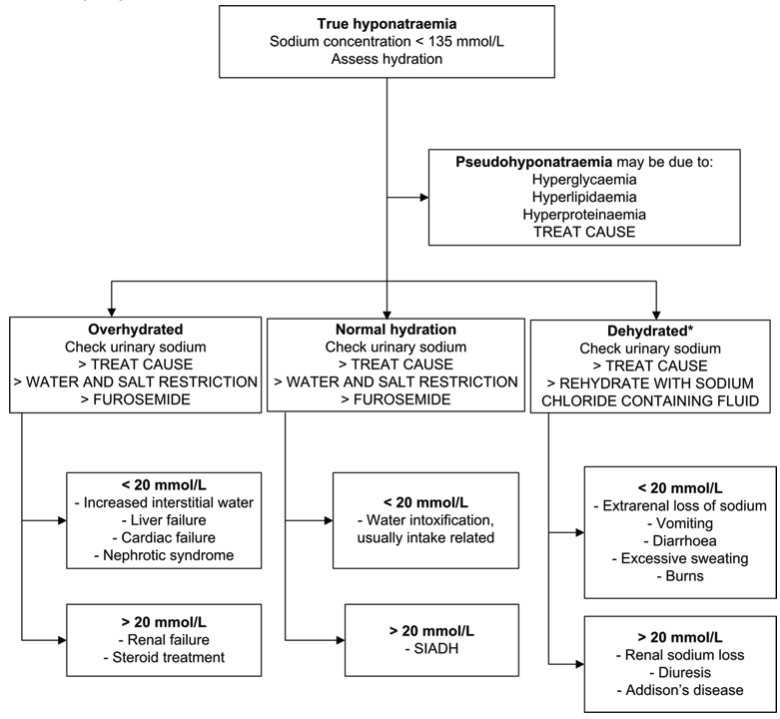| Mild to moderate symptoms: | Headache, nausea, vomiting, fatigue, gait disturbances, and confusion. |
| Severe symptoms: | Seizures, obtundation, coma, and respiratory arrest. |
Acute hyponatraemia develops within hours due to self-inflicted water-intoxication.
Rapid correction may lead to central pontine myelinolysis, which is often irreversible. Sodium should be frequently monitored and increases should be <9 mmol/L per day.
APPROACH

MEDICINE TREATMENT
In the presence of fluid overload:
- Furosemide, oral, 40 mg 12 hourly.
- Increase dose to control signs of fluid overload and to improve hyponatraemia.
In the absence of fluid overload:
Consult with a specialist before administering sodium chloride, IV infusion.
- Sodium chloride, IV infusion.
CAUTION
Hypertonic sodium chloride should be reserved for severe acute hyponatraemia (sodium level <120 mmol/L with severe symptoms) and exceptional circumstances.
| One litre of NaCl infusate | Total Na (mmol/l) | Indication | Fluid | Aim |
|---|---|---|---|---|
|
5% NaCl Expect an increase of 2-3 mmol/L for every 60 mL |
855 |
or |
• Hypertonic sodium chloride, 5%, 60 mL as an IV bolus over 15 min |
- 4-6 mmol/L immediately AND - Maximum 8 mmol/L in 1st 24 hrs |
|
5% NaCl Expect an increase of 2-3 mmol/L for every 60 mL |
855 |
or |
|
- Maximum 8 mmol/L in 1st 24 hrs |
| 0,9% NaCl | 154 |
|
|
|
To calculate the infusion rate, consult a specialist. https://reference.medscape.com/calculator/643/sodium-correction-rate-for-hyponatremia